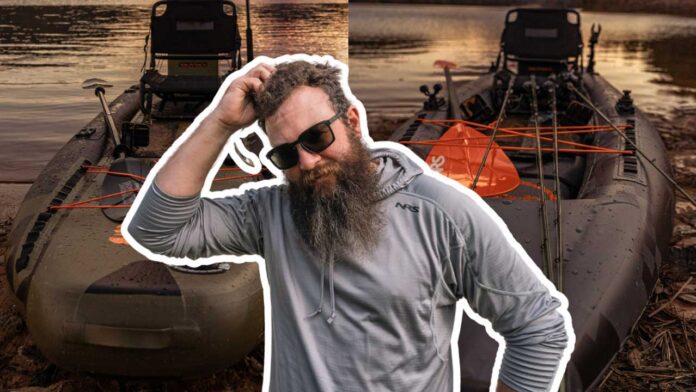Today I'm going to walk you through a comparison of two popular NRS inflatable fishing kayaks – the NRS Pike Pro vs the NRS Kuda 126.
Both of these kayaks are 38 inches wide and have three inflatable chambers. They have one chamber in each of the outside tubes and another in the deck. The deck chambers have drop-stitch technology that gives these boats a lot of rigidity. The Pike Pro and Kuda 126 are very stable kayaks that you can stand up easily in, and they’re pretty close in price too.
Now let's look at how they match up in some key areas.
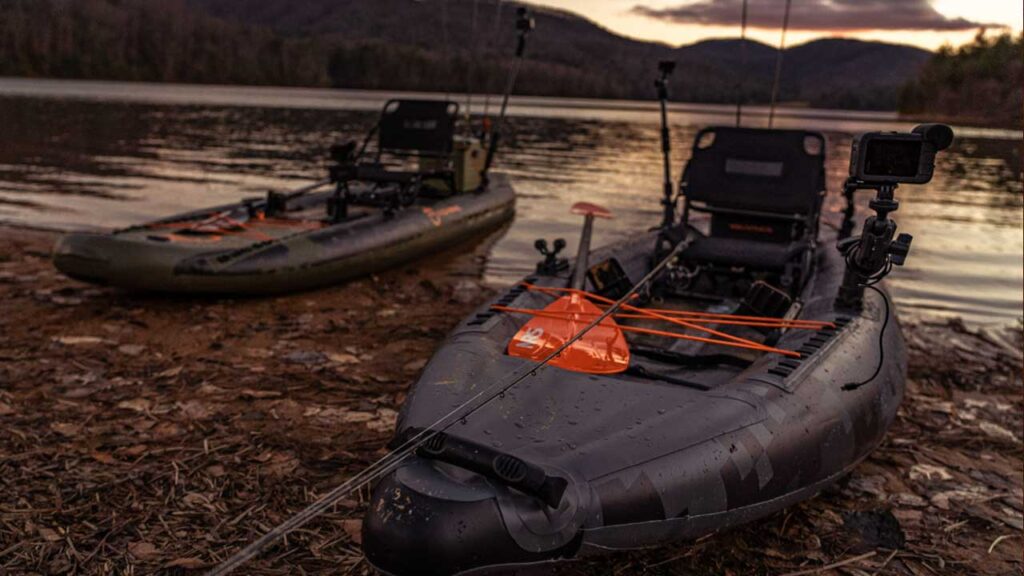
Pike Pro vs Kuda 126 – Prices and Package Options
First off, Kudas come in two packages. There's a 10-foot 8-inch version called the Kuda 106 that costs $1,395. The other is a 12-foot 6-inch model called the Kuda 126 that costs $1,495.
The Pike only comes in a 12-foot 8-inch length called the Pike 126. However, Pike kayaks are available in Standard and Pro packages. The Standard Pike package costs $1,395, while the Pike Pro costs $1,795. But for that extra $400 you get some great YakAttack accessories and a paddle, so it's a good value.
At 12-foot 8-inches long and $1,395 compared to a similar length Kuda, the Kuda is about a hundred dollars more. But again, they both have three chambers. On each boat, the deck has drop stitch technology which can be inflated to 8 PSI for outstanding rigidity.
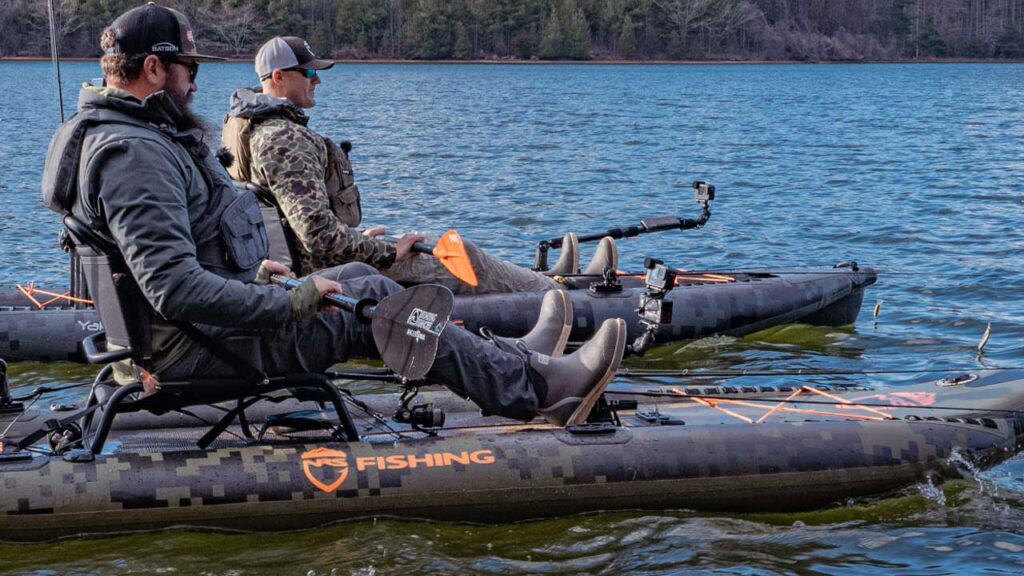
Standard Equipment and Foot Peg Placement
The Pike Pro and Kuda 126 come with the same fin and other standard gear like a backpack, a pump, a patch kit, and foot pegs.
I personally like the placement of the foot pegs a little better on the Pike Pro because it’s more of a sit-inside kayak. The Pike Pro’s footpegs are on the sides where they traditionally are on most other kayaks.
The Kuda's foot pegs are directly on the deck instead of the sides because it’s a sit-on-top kayak. However, I almost consider it a stand-up paddleboard style of kayak. I initially thought the placement of the foot pegs on the Kuda might be an issue, but it really wasn’t. I put my forefeet on the pegs with the Pike Pro, while I tend to use my heels on kayaks like the Kuda 126.
That said, the foot pegs on both boats worked really well.
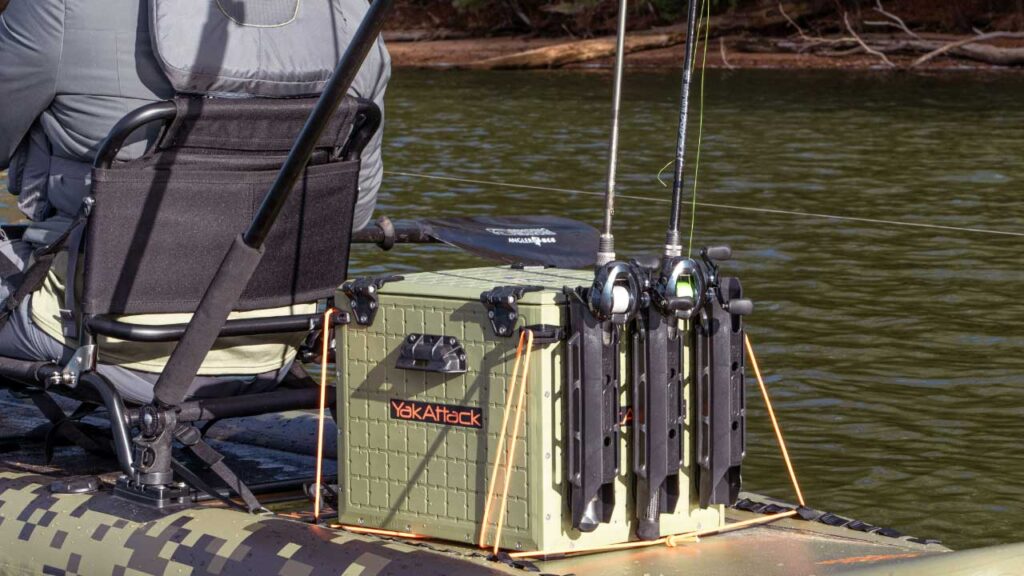
Weight and Maximum Capacity
The Pike Pro is a few inches longer than the Kuda 126, but both kayaks are 38 inches wide.
I’m not sure why, but the Pike Pro weighs 48 pounds while the Kuda 126 only weighs 31 pounds. However, Pike and Pike Pro kayaks have maximum capacity ratings of 375 pounds compared to 300 pounds for the Kuda 126. But honestly, these are probably conservative ratings.
I think the Kuda’s rating may be even more conservative because I weigh 220 pounds. With my BlackPak and fishing gear I’m usually pushing that 300-pound mark. So even near the maximum limit, there was really no difference in how either of these boats performed.
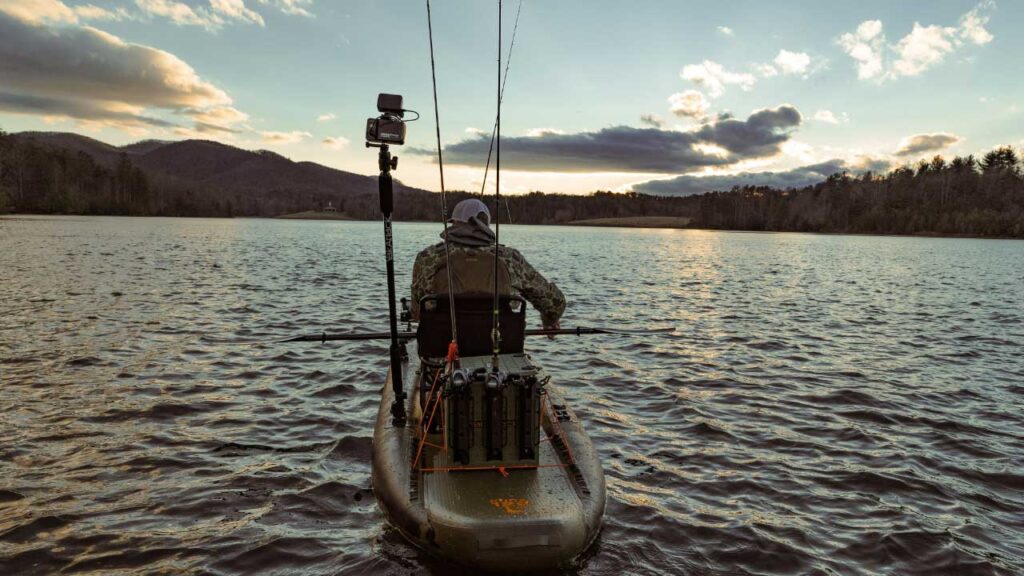
Hull Slap
When I had these boats out on the water I noticed that there was a little more hull slap with the Kuda 126 than with the Pike Pro.
I think this is because the Kuda is a sit-on-top kayak that has a very flat bottom and hull. This design provides a lot of stability, but the boat rides higher in the water instead of cutting through it.
We experienced some wind and chop during testing. The waves regularly rolled into the flat surface underneath the bow, and it made a little noise. I’m not sure if it's a big deal or not, but you could definitely hear the waves hitting the boat and feel them vibrating up into the seat. So if that's a big deal to you, it’s something you might want to consider.
I also want to mention that the Pike series kayaks have some hull slap too, but it’s far less than it is with the Kuda boats.
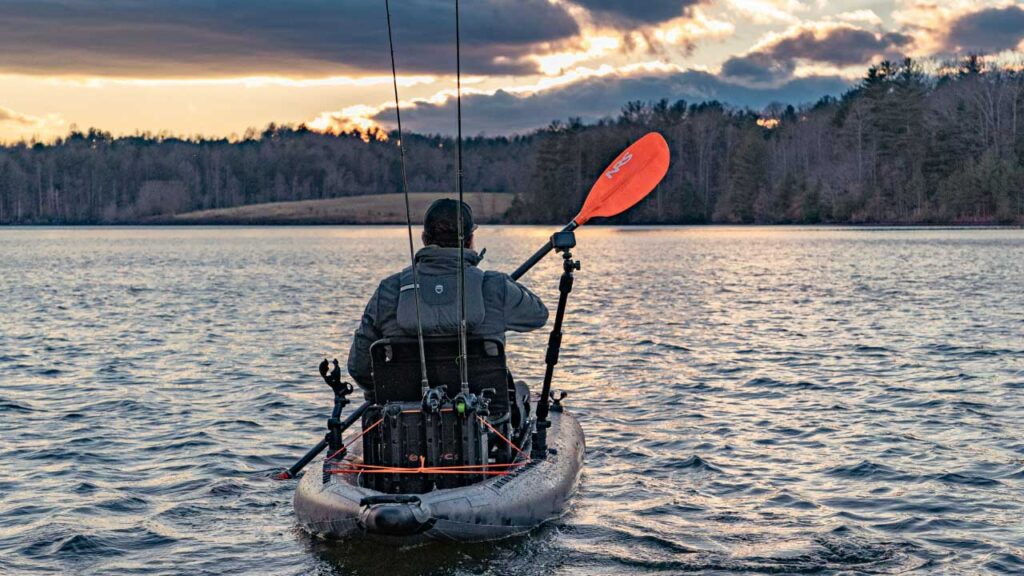
The Pike Pro is Tops for Tracking
Another difference between the Pike and Kuda kayaks is that the Pike tracks a little bit straighter.
I think this is because it has a nice sharp bow entry. You also have the same thing where the water exits. This allows the Pike to cut through the water more easily and efficiently. In addition, I noticed that the Pike Pro seemed to lock into place more easily. I think the Pike Pro is going to be the better and more efficient boat if you’ll be spending a lot of time in open water.
And again, the Pike has less hull slap than the Kuda because it sits lower in the water whereas the Kuda is more like a stand-up paddleboard.
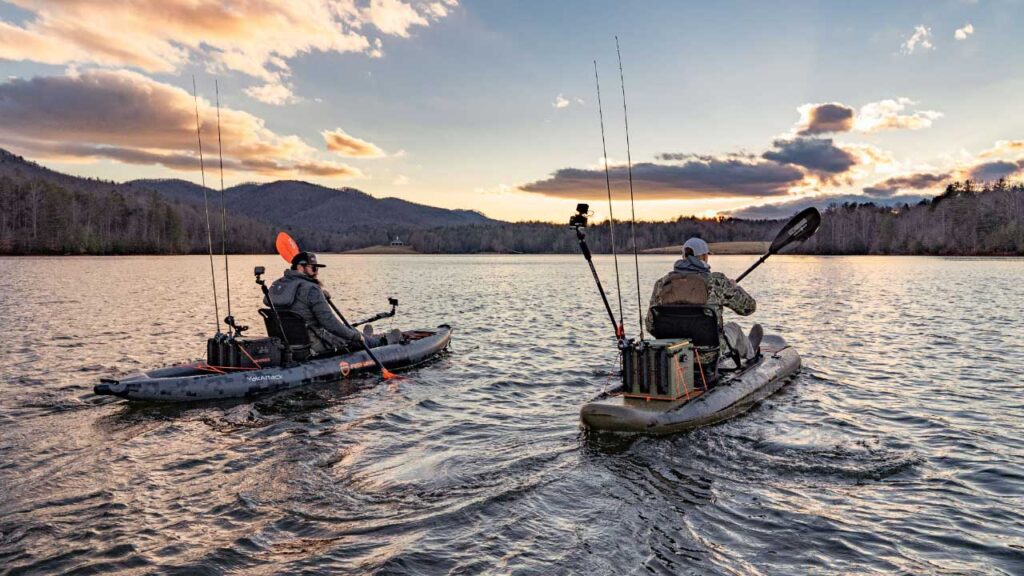
Sit-Inside vs. Sit-on-Top Kayaks
To recap, NRS's Pike Pro is a sit-inside kayak while the Kuda 126 is a sit-on-top boat. There are a number of differences between the two designs whether we're talking about inflatables or hard shell kayaks.
You'll notice one big difference when water gets in the two boats. With the Pike Pro, water generally stays inside the boat until you pump it out or get out of the kayak and dump it out. This is because sit-inside kayaks are kind of like bathtubs. On the flip side, sit-on-top kayaks like the Kuda 126 have flat tops. This allows water to drain away quickly and easily because there's nowhere for it to collect.
Most sit-inside kayaks aren't self-bailing, whereas sit-on-top kayaks typically are. So when you take some water in the Kuda, it's nice knowing that it won't stick around for very long.

Standing and Seating Areas
Even though these boats are both 38 inches wide, the standing area on the Kuda 126 just feels a lot wider.
I think this is because the tubes on the outside are a smaller diameter and the center deck is wider. With this design, the seat has a little bit of space on each side between it and the tubes. I also feel like you can spread your feet out and get a wider stance with the Kuda. This made it feel a little more stable than the Pike.
By contrast, the Pike has bigger tubes and a smaller area inside. Since the standing area is almost the exact width of the seat, you have to keep your feet closer together. And again, this narrower stance makes the Pike feel slightly less stable even though the boats are the same width.
Both boats have the same seat, but it feels like you’re sitting higher up in the Kuda. With the Pike, it definitely feels like you’re down inside something. Of course, this isn't surprising since the Kuda is a sit-on-top kayak and the Pike Pro is a sit-inside kayak.
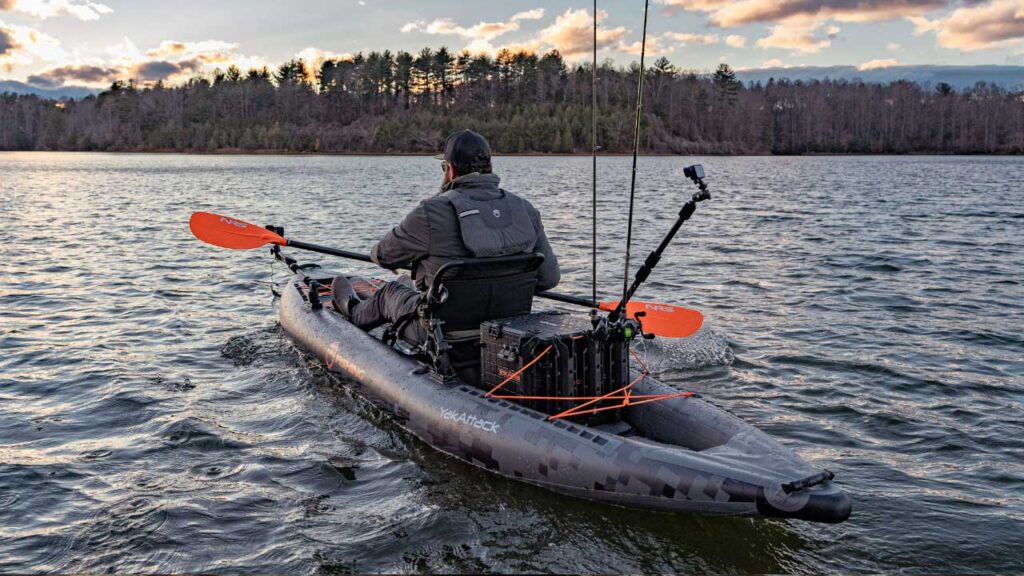
Secure Deck Storage on the Pike Pro
One advantage of sit-inside kayaks like the Pike series is that I feel like my rods and gear are more secure when they’re laid out on the deck in front of me.
So that’s one big plus for the Pike series because it’s nice knowing your gear isn't going to fall or get washed over the side. Whereas if I lay something on top of the Kuda it could get washed over or I could inadvertently knock it over into the water.
It's also easier to lose a flopping fish that you're trying to measure on the Kuda because it has a flat deck that doesn't have elevated sides to hold everything in.
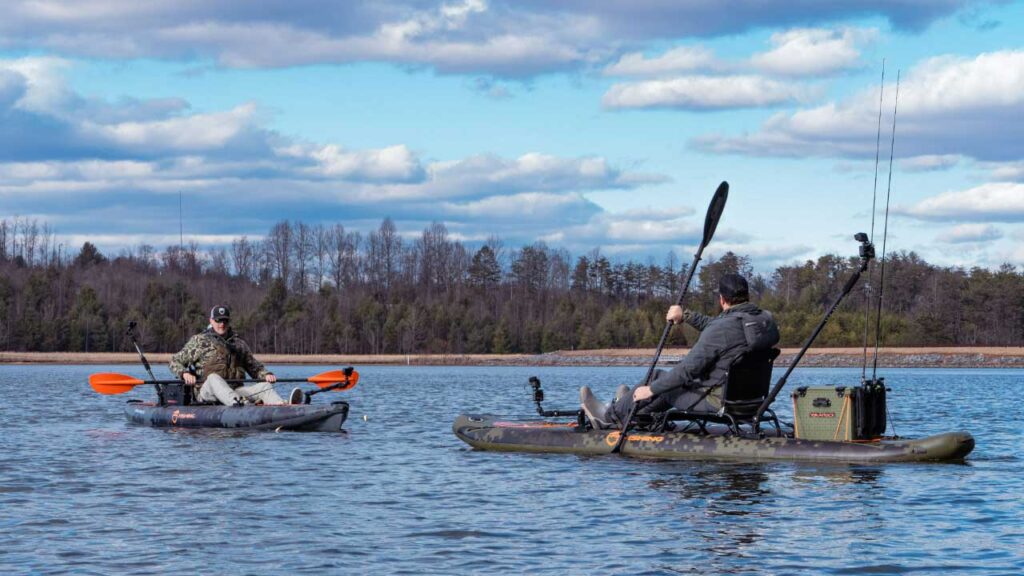
Profile and Wind Resistance
I initially thought the Kuda would have a lower profile on the water. The tubes are a little higher, but it's actually pretty insignificant.
When we're talking about how high above the water these boats sit I feel like they're actually pretty close. How a boat sits in the water can make a big difference when it comes to tracking, maneuvering, and stability. So the wind is a bigger deal with inflatable kayaks than with traditional hard kayaks.
Inflatable kayaks don't generally have much resistance because they don't sit very low in the water. So in some cases, wind can blow them across the water pretty easily.
When it comes to wind resistance, I'd give the Pike a slight edge. It just locks in better due to that sharp entry point on the bow, and because it sits a little lower in the water than the Kuda.
The Verdict – Pike Pro vs. Kuda 126
Still not sure which boat makes the most sense for you? Well even for me, it would be tough to decide between the Pike Pro and Kuda 126.
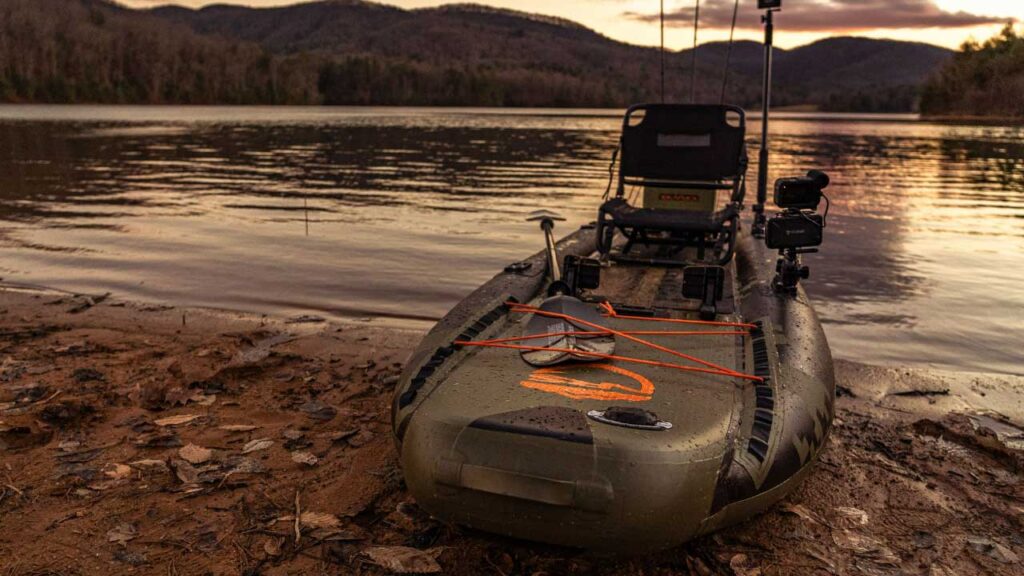
What I Like About the Kuda 126
Getting on and off the Kuda is easier since it’s a sit-on-top. I also found it to be more stable while standing in the deck area because I could spread my feet out. In my opinion, the Kuda is probably a better option than the Pike if you're primarily a river angler who occasionally ventures into whitewater.
And last, I really liked the color of the Kuda 126 I tested. The Pike is available in the same color scheme too, just not in the Pro version. So if anything, I just wish that the Kuda was available in a Pro version like the Pike.
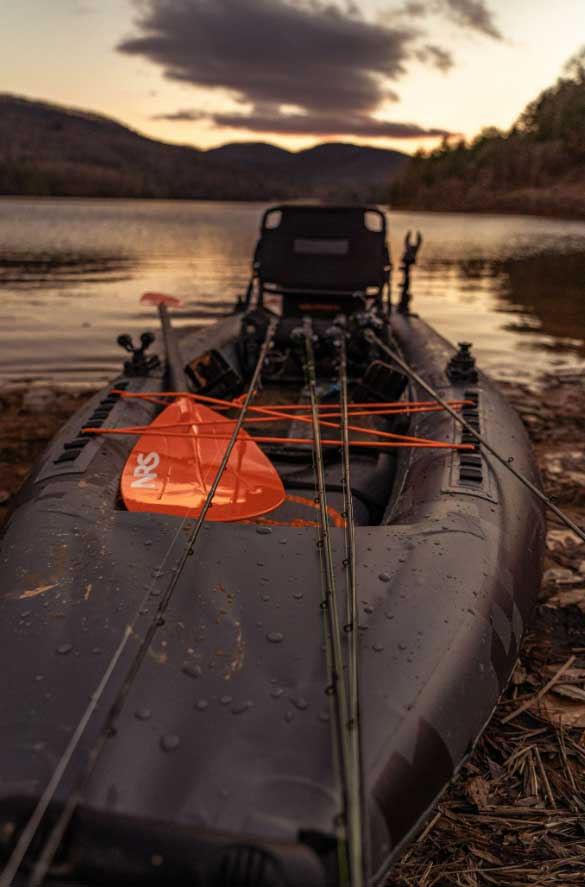
What I Like About the Pike Pro
I love that the Pike is available in a Pro package and that it comes with a number of accessories you'll probably end up adding anyway. You can pretty much hit the water right out of the gate with the Pro Package since it comes with a paddle.
However, it's a pretty close tie for me if you're just comparing the Standard Pike to the Kuda.
I'd also say that the Pike Pro will be a little more efficient if you'll be fishing flat, open water like in small lakes and ponds. It just tracks straighter and is a hair quicker than the Kuda.
You Can't Go Wrong with Either Boat
In the end, you'll just have to decide for yourself which boat will work best. But again, I'm not sure which would be the best all-around fishing kayak for me. So I can’t really recommend one over the other.
Either way, they’re both great kayaks and I really enjoyed fishing out of both of them.
Check out NRS' website for more information on the Pike Pro and Kuda series inflatable fishing kayaks.
And as always, thanks for stopping by.
Follow my Adventures and Subscribe
Don’t forget to check out my YouTube channel, Road Trip Angler, and keep an eye out for more reviews and head-to-head comparisons we’ll be publishing shortly.
If you enjoyed this article and are hungry for more adventure fishing tips, tricks, reviews, and adventures, head on over to the Road Trip Angler YouTube channel and feel free to sign up for our In4Adventure.com newsletter.

Inflatable fishing kayak: NRS Pike Pro, NRS Kuda 126
Life vest: NRS Chinook PFD
Accessories: YakAttack Omega Rod Holder, YakAttack Cup Holder, YakAttack Rotogrip, and the YakAttack BlackPak Pro
Shirt: NRS Varial Hoodie
Rods: Judge Crankbait Series, Eternity Series, Revelation Series
Sunglasses: Wiley X



